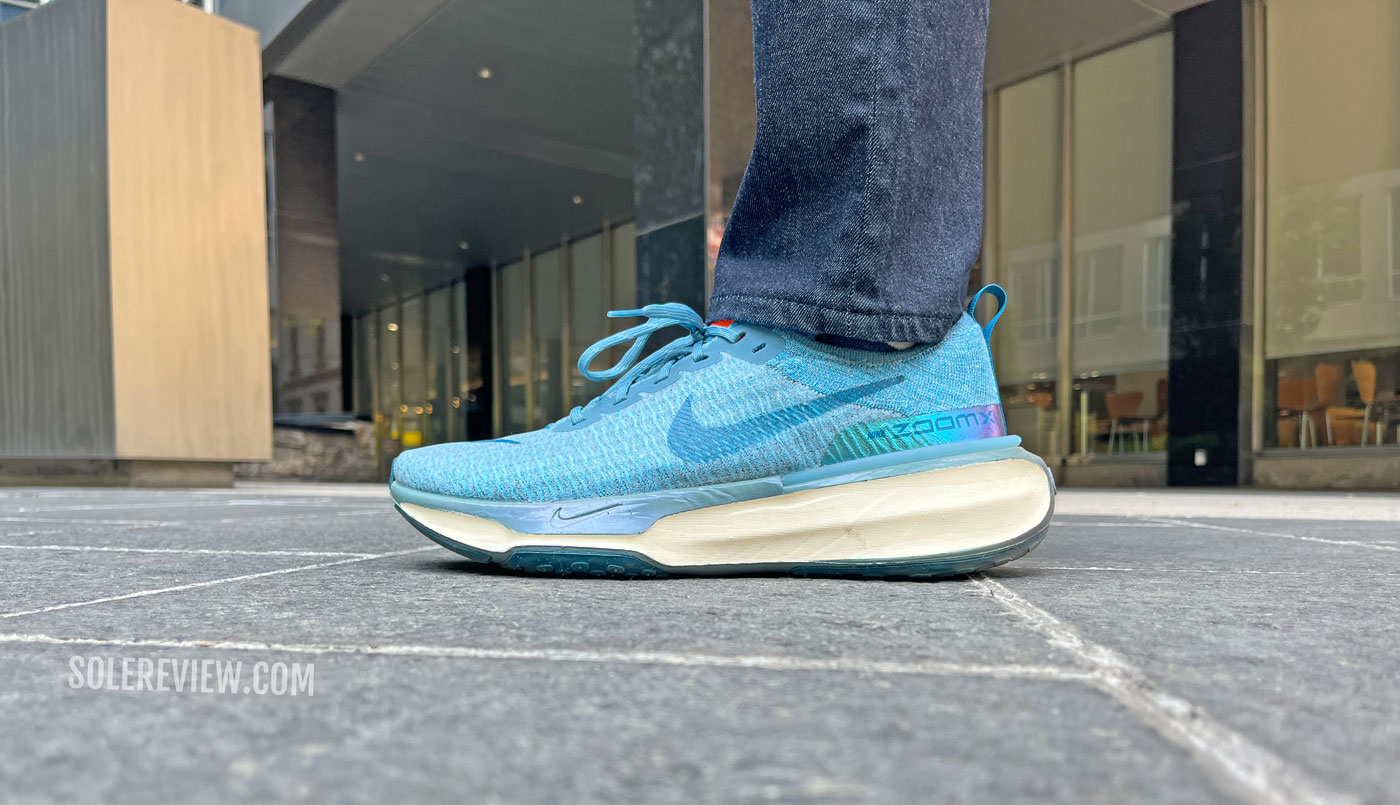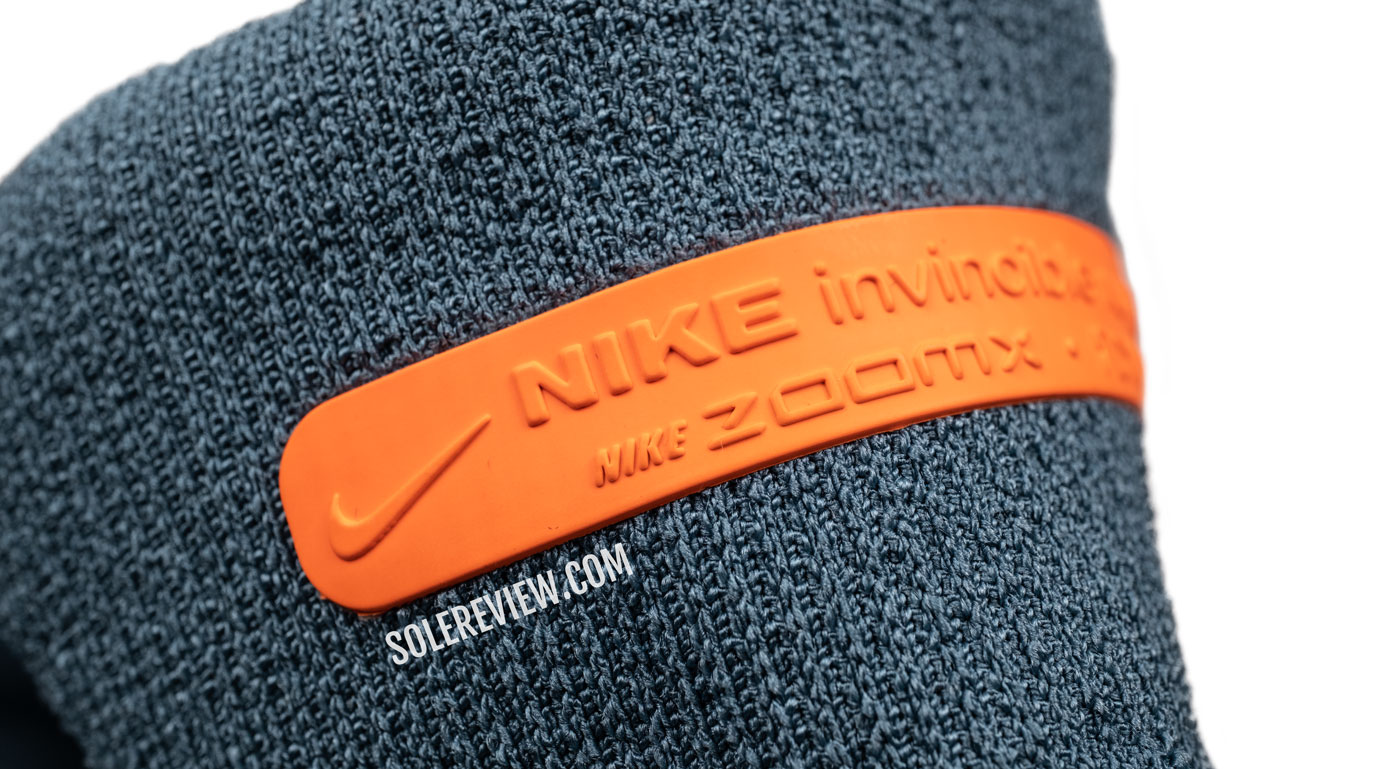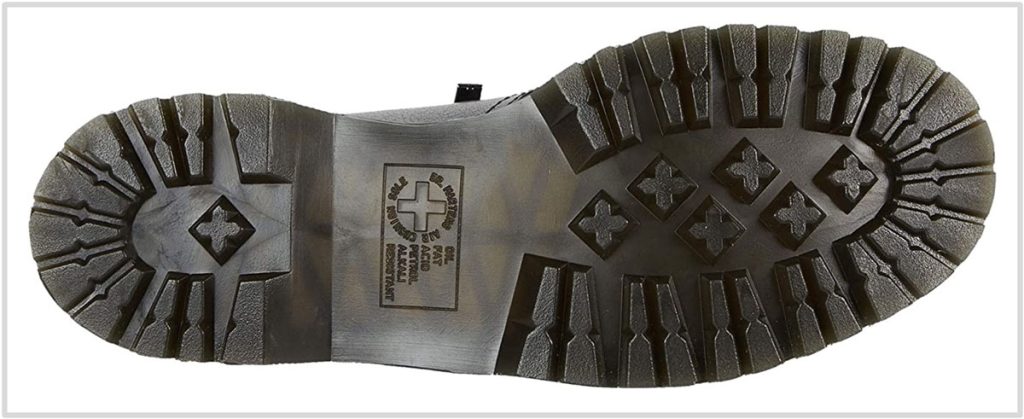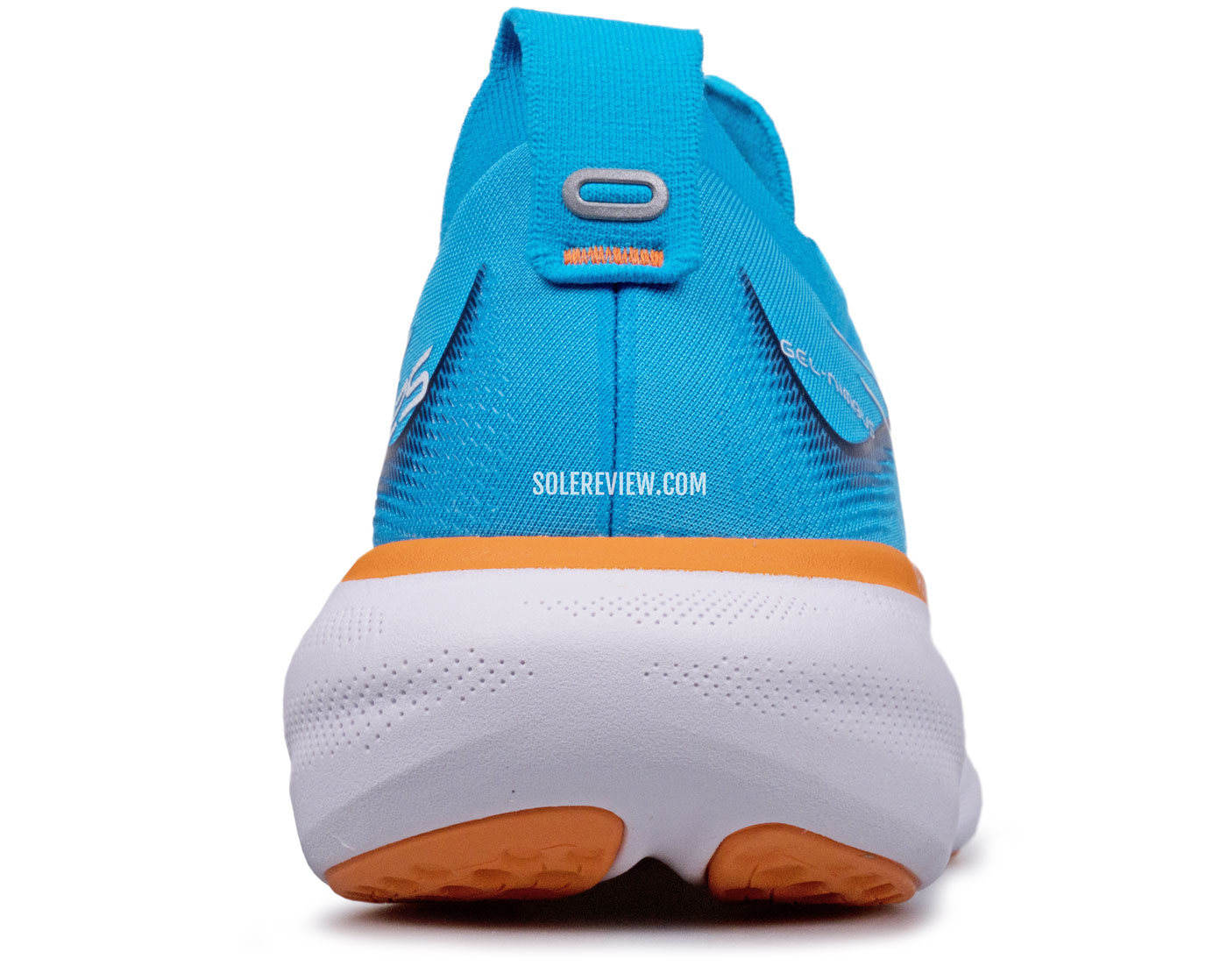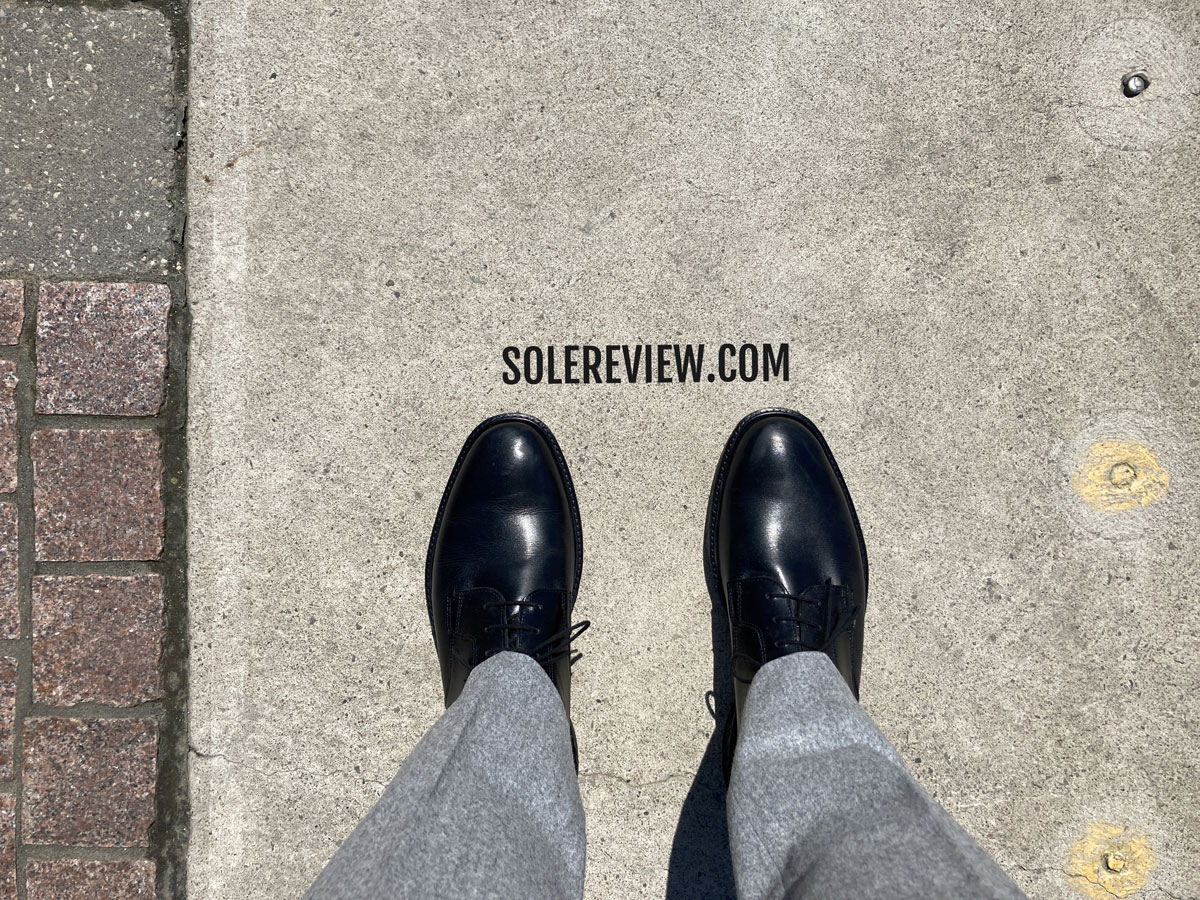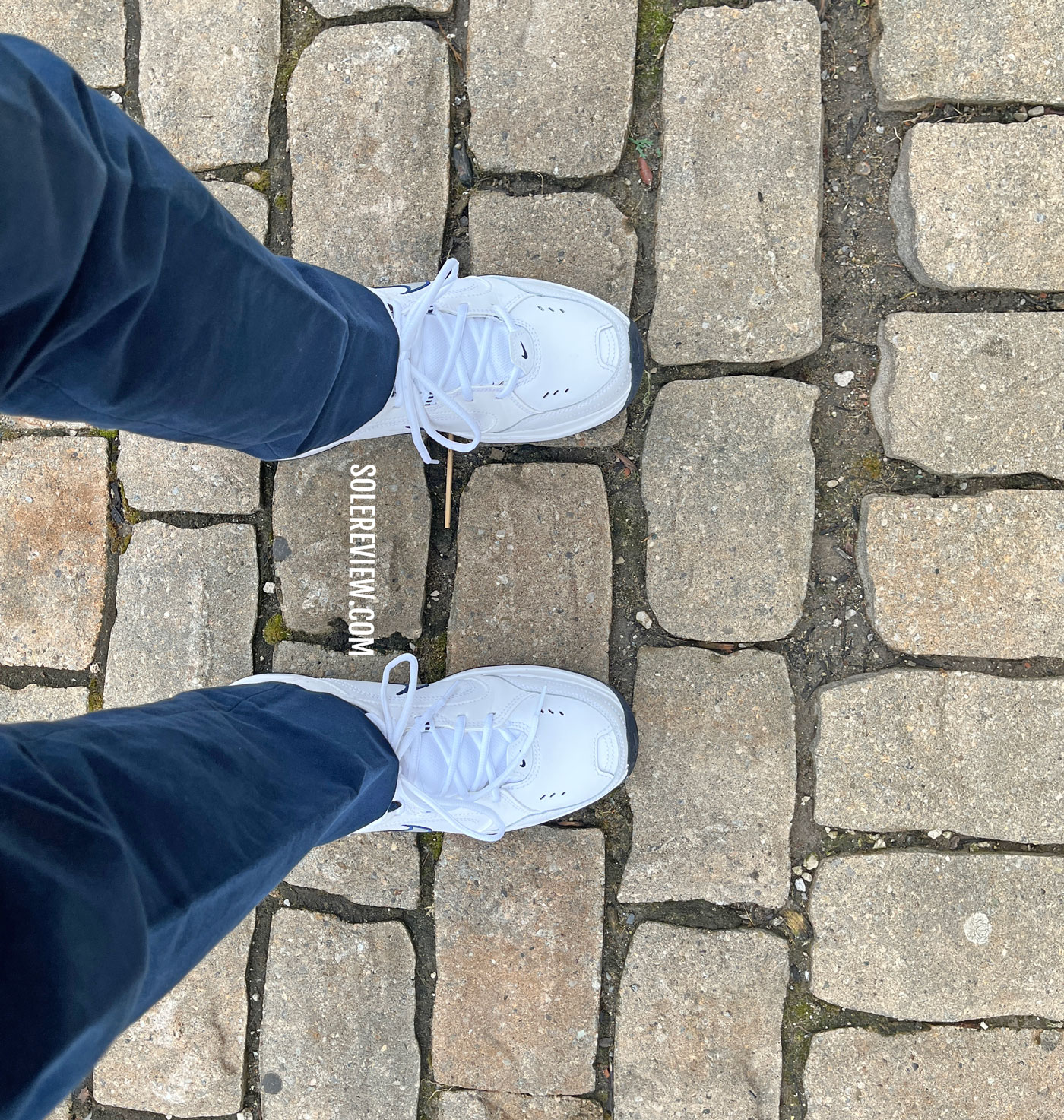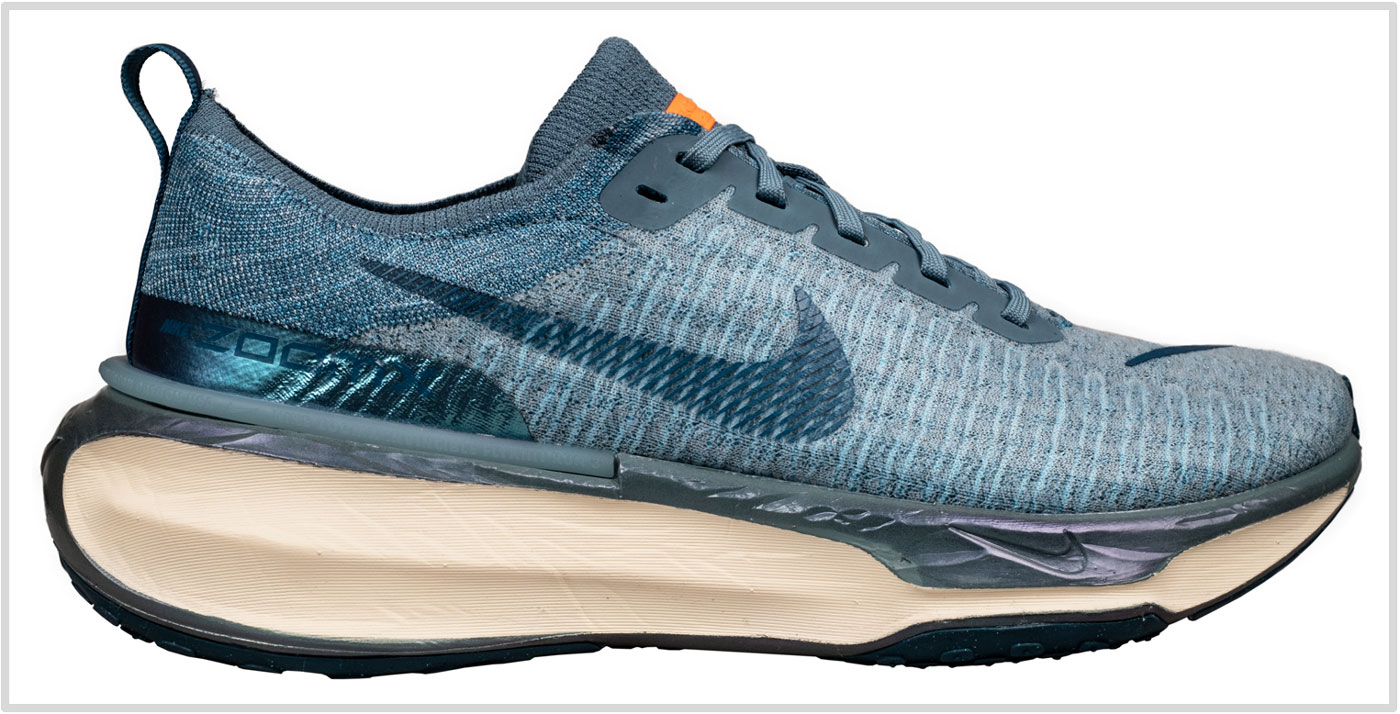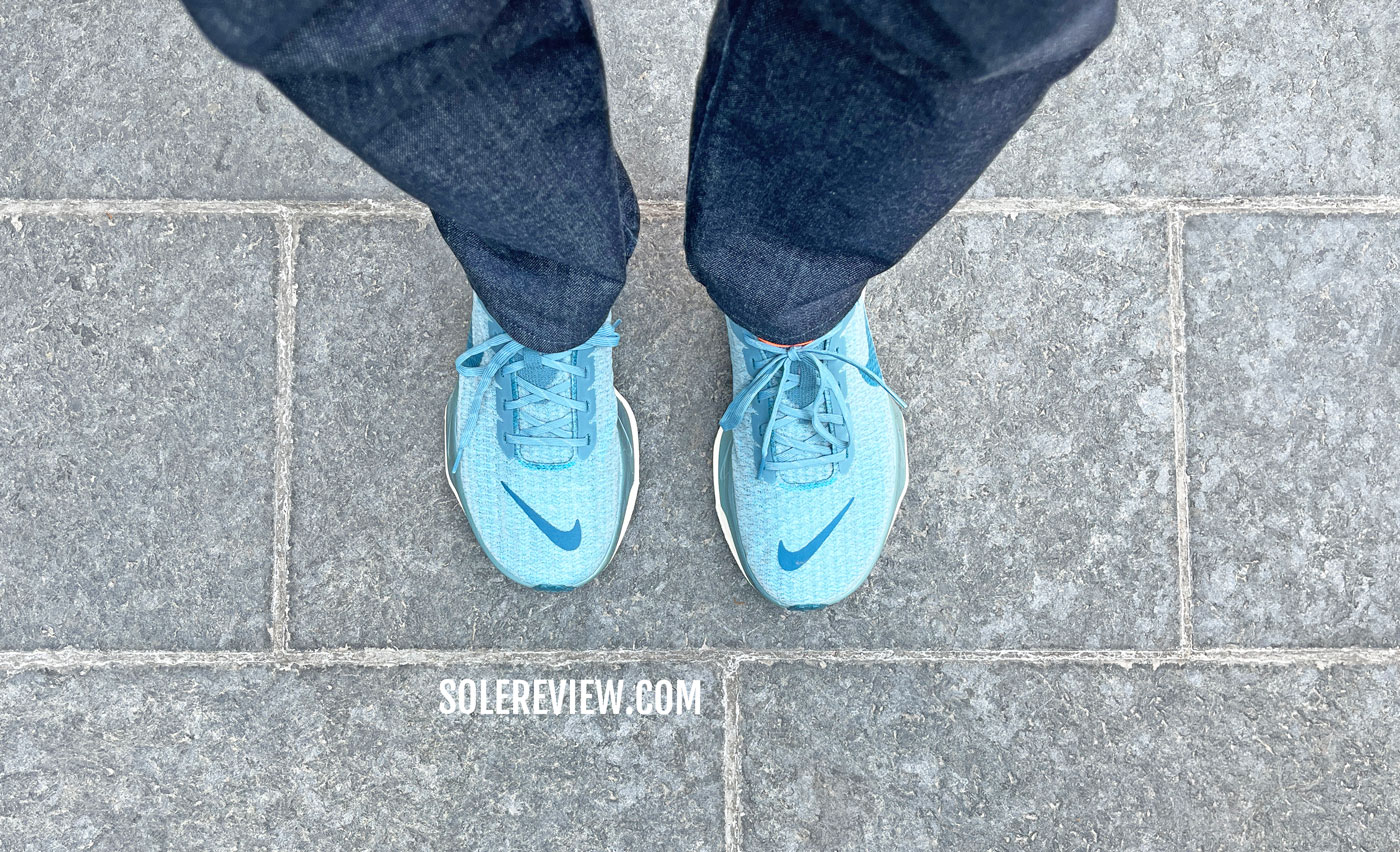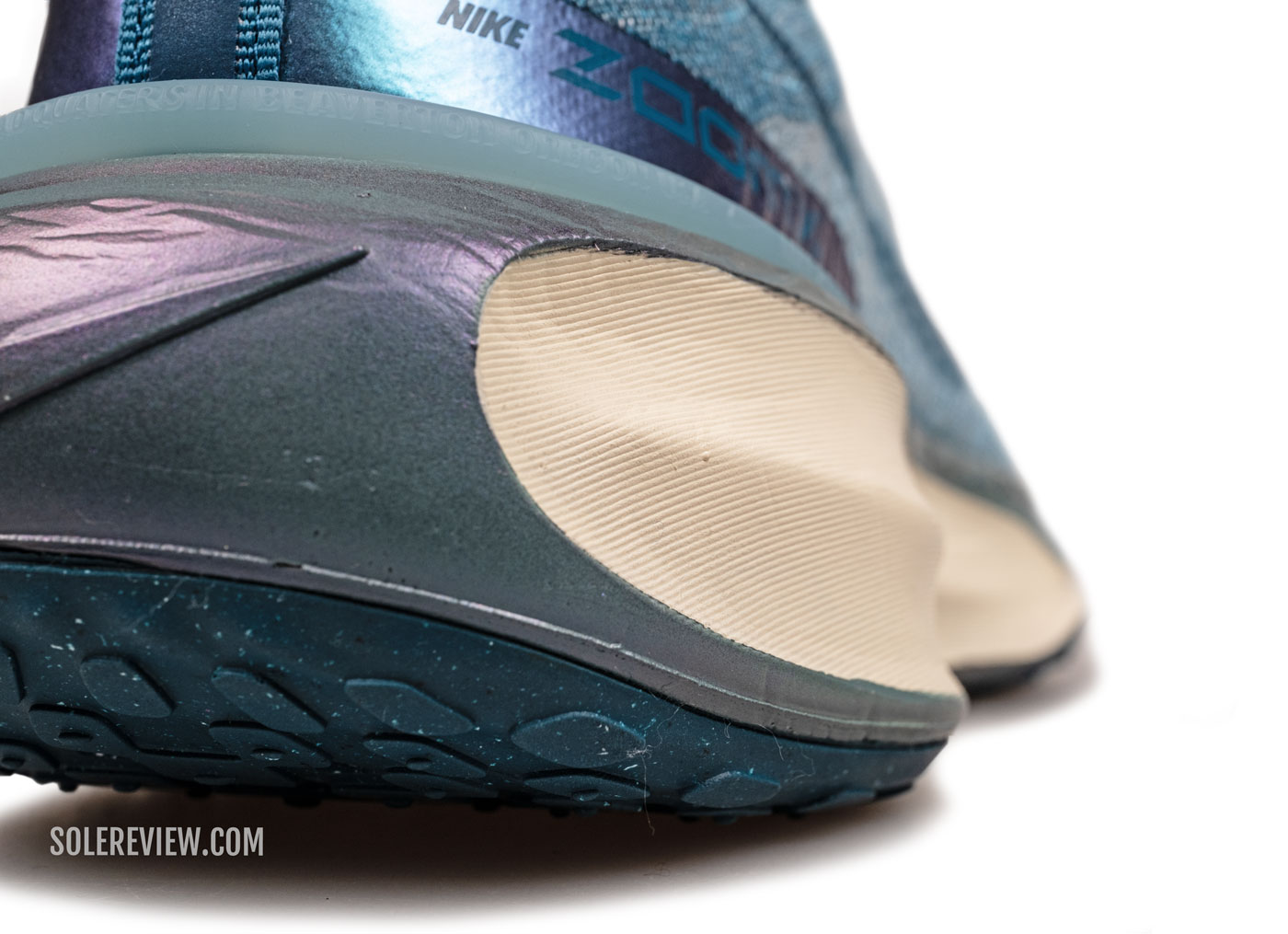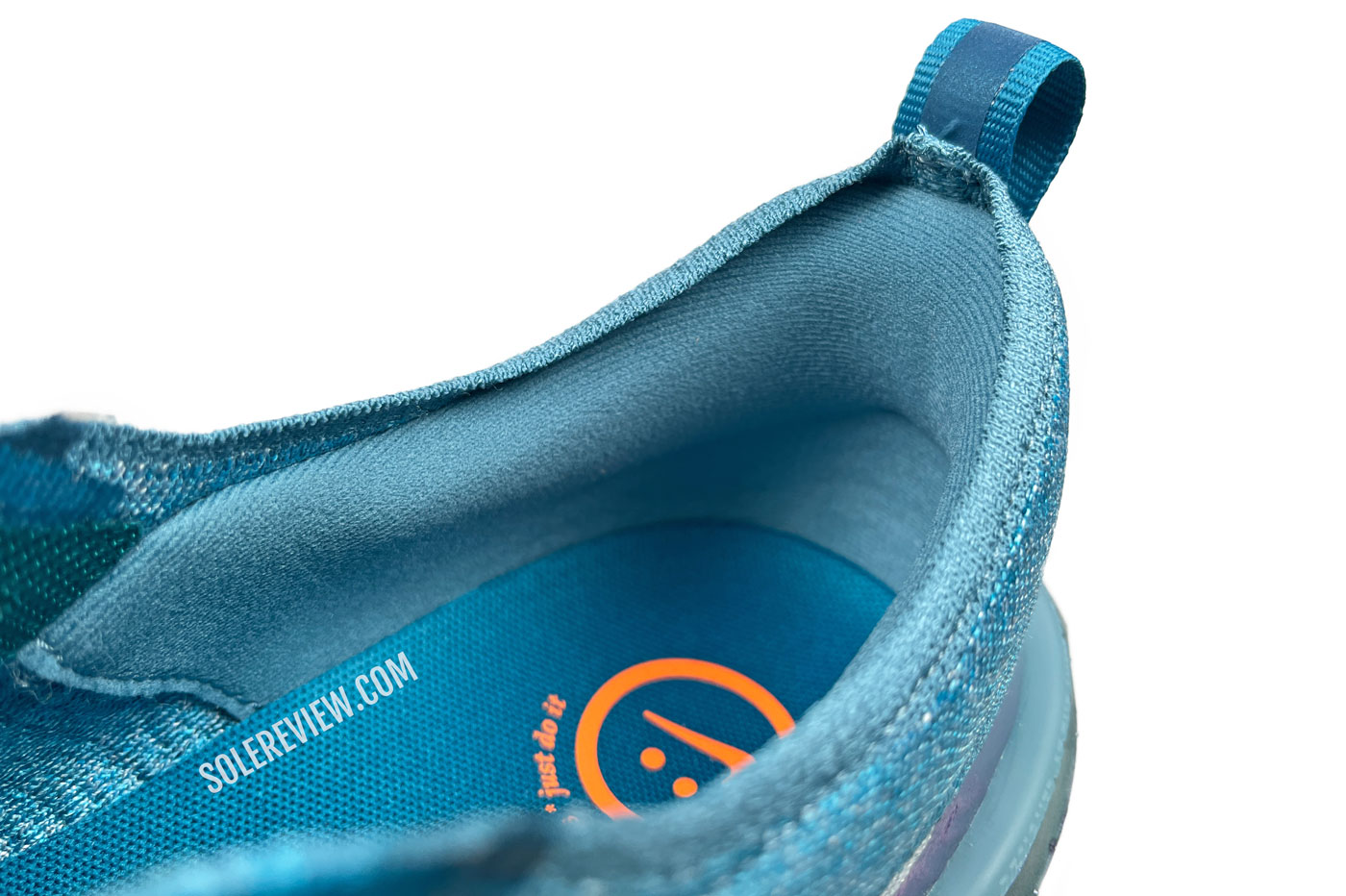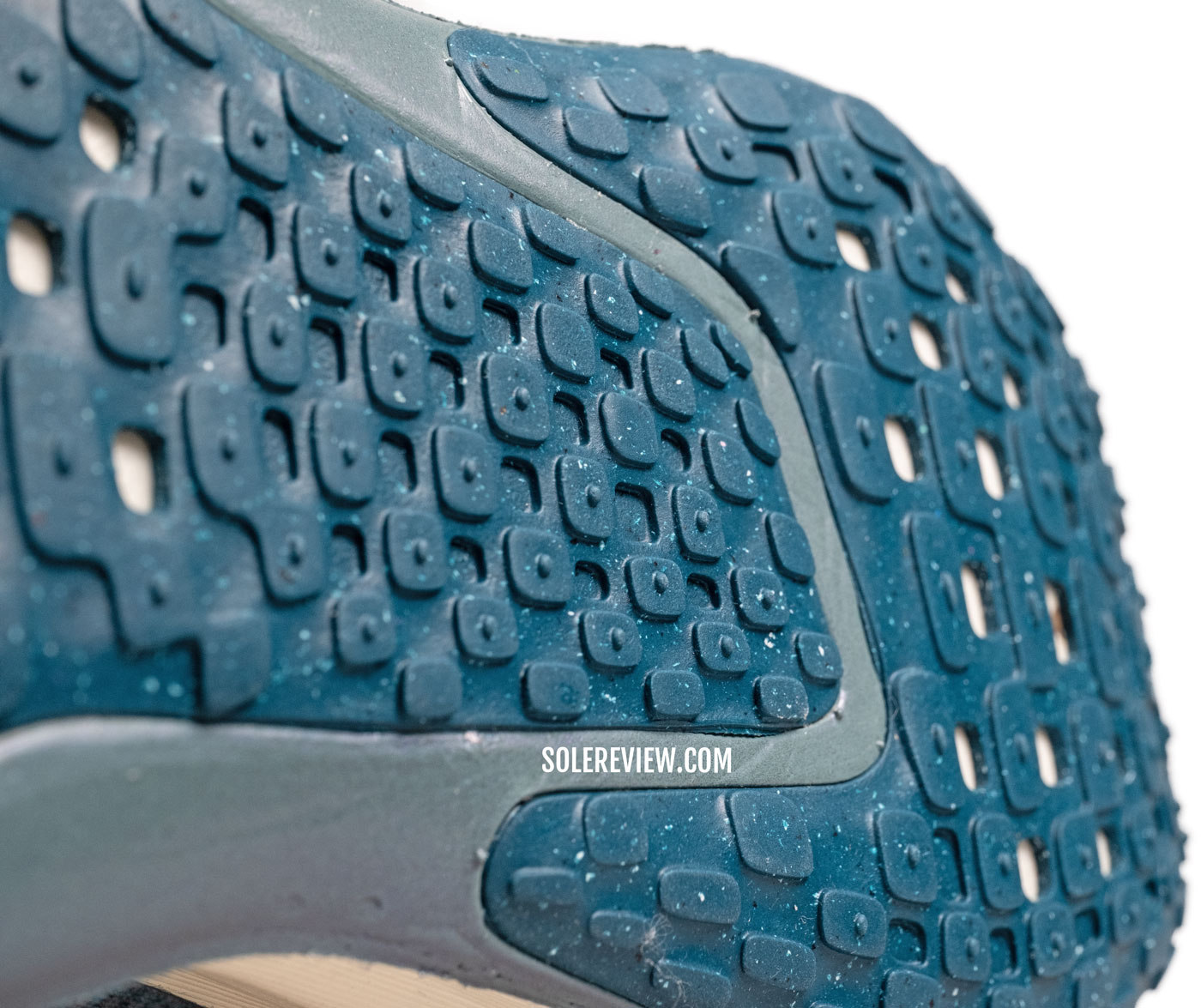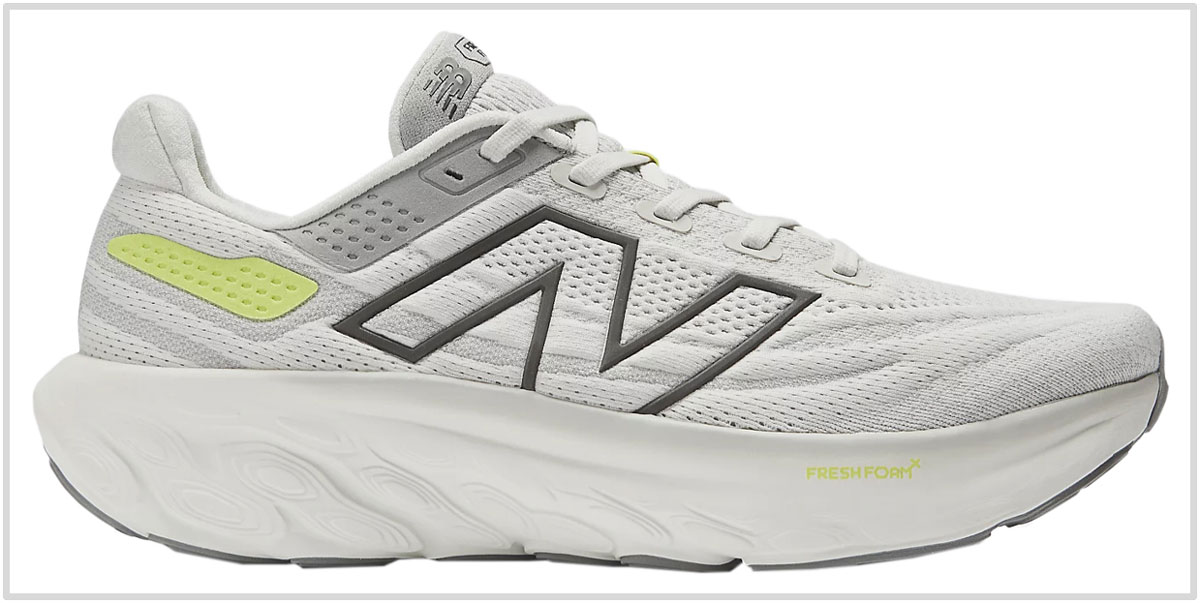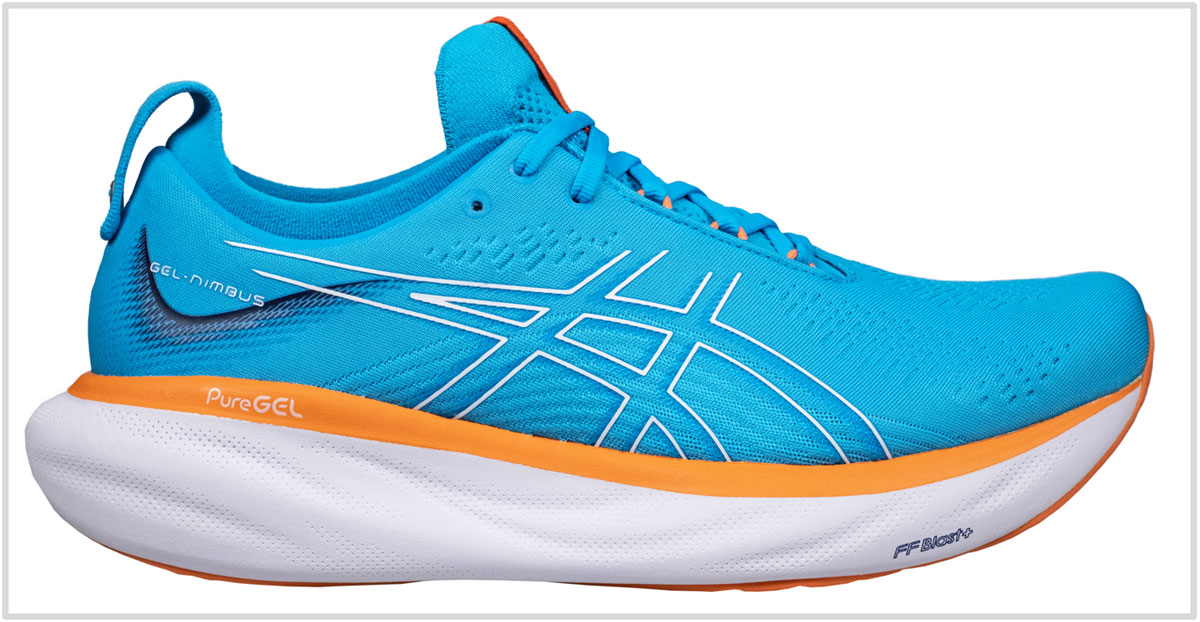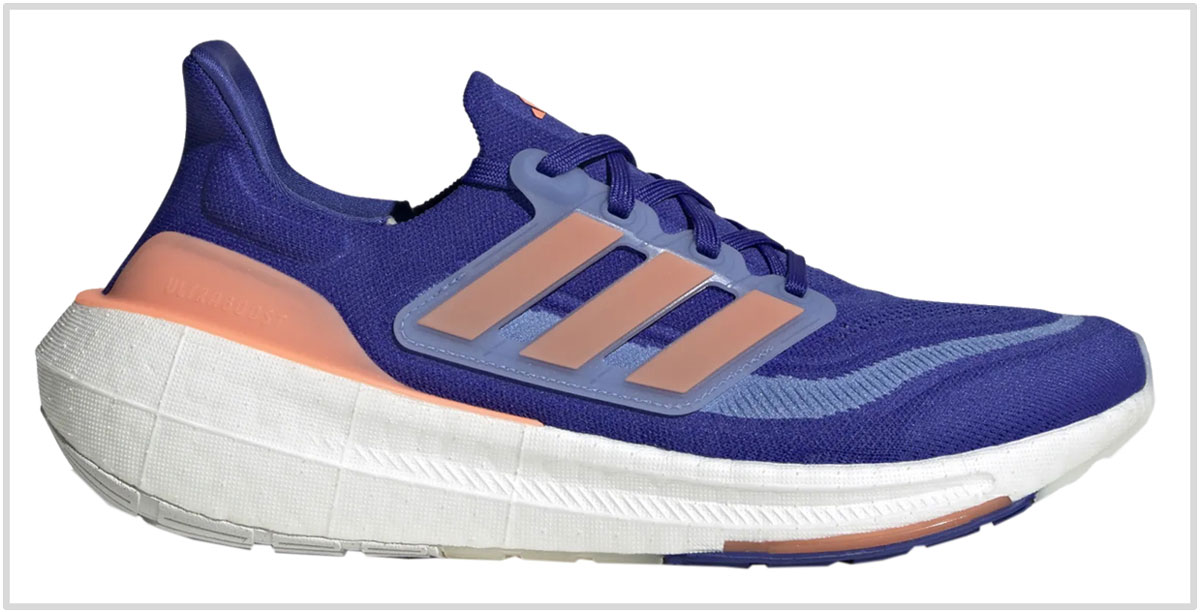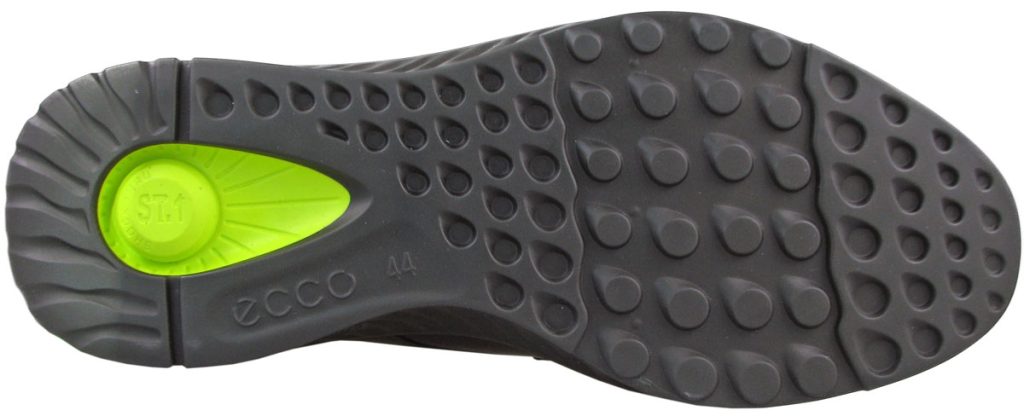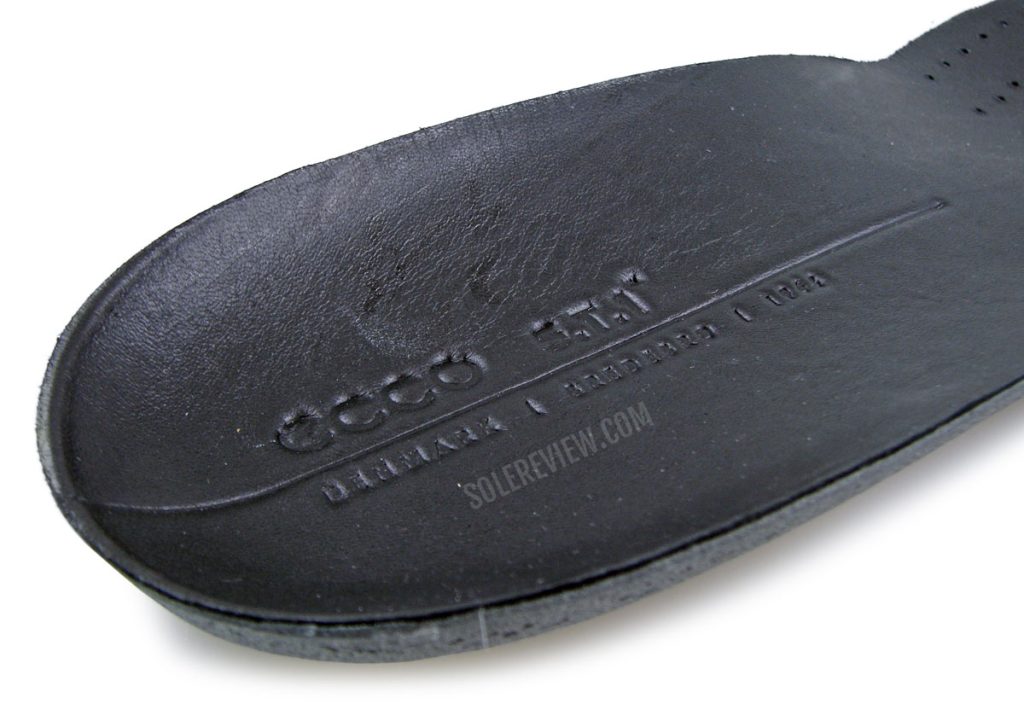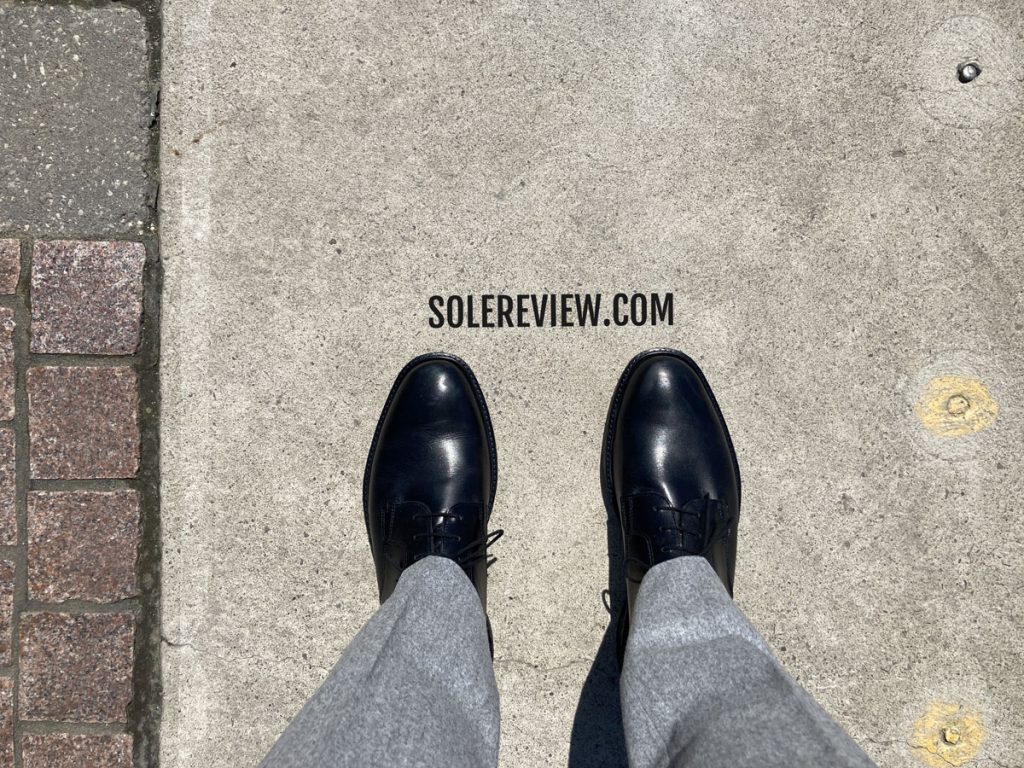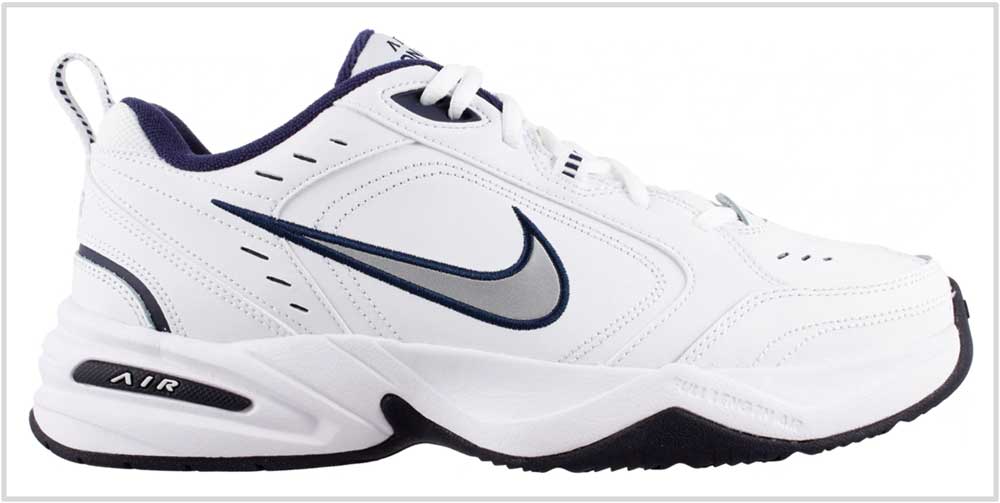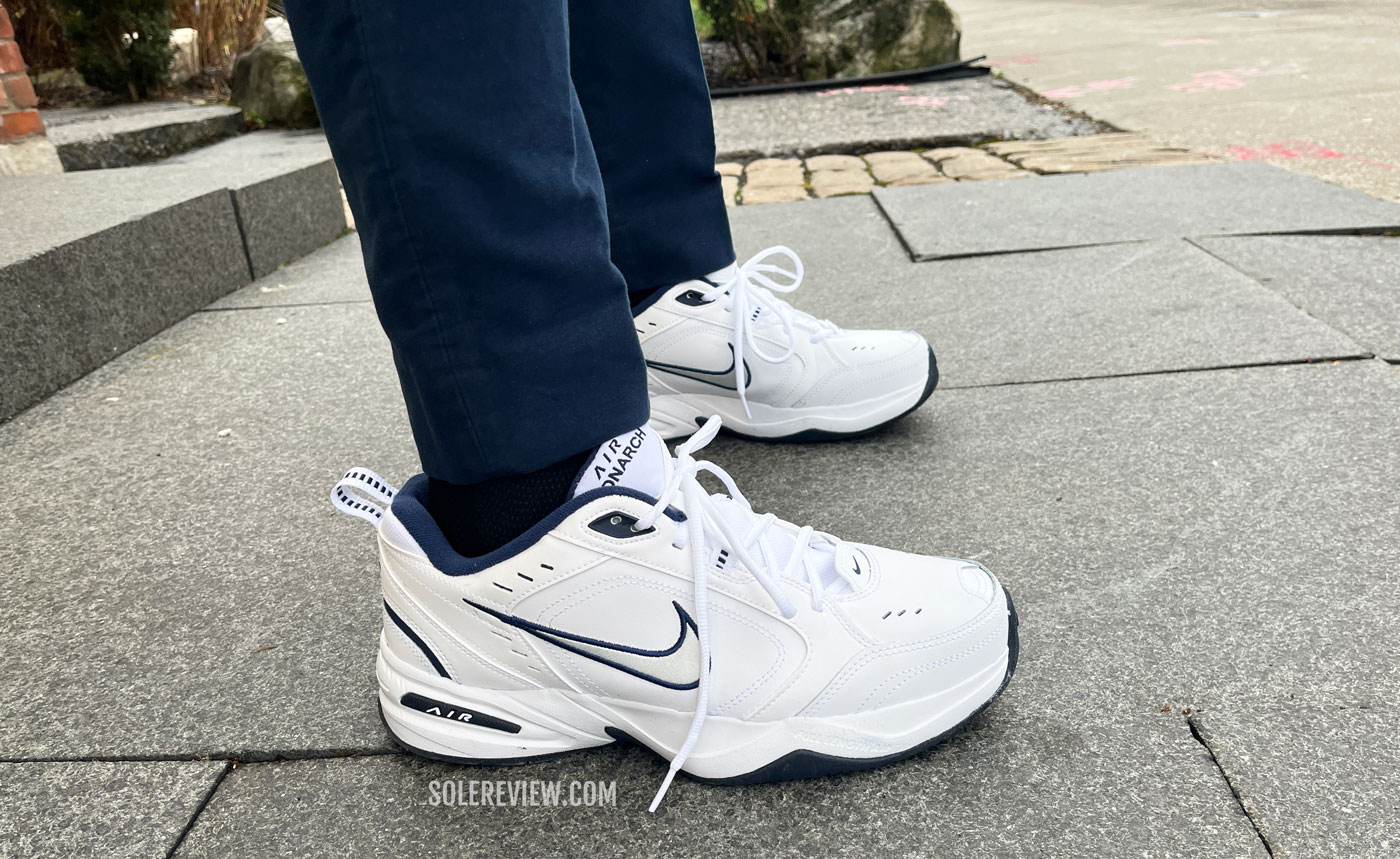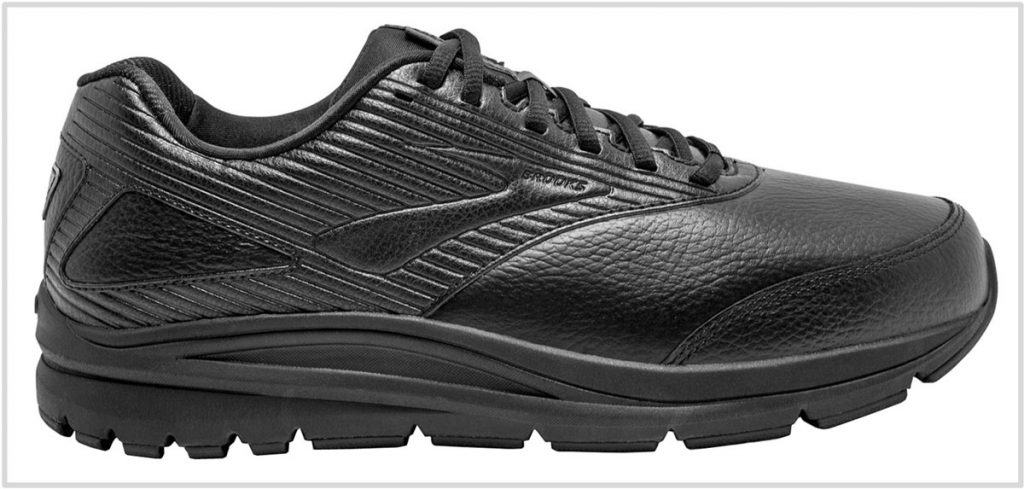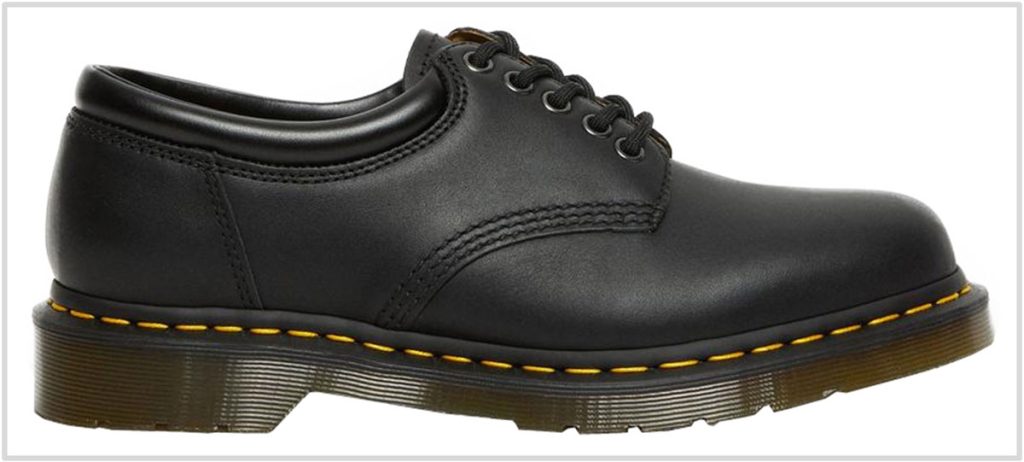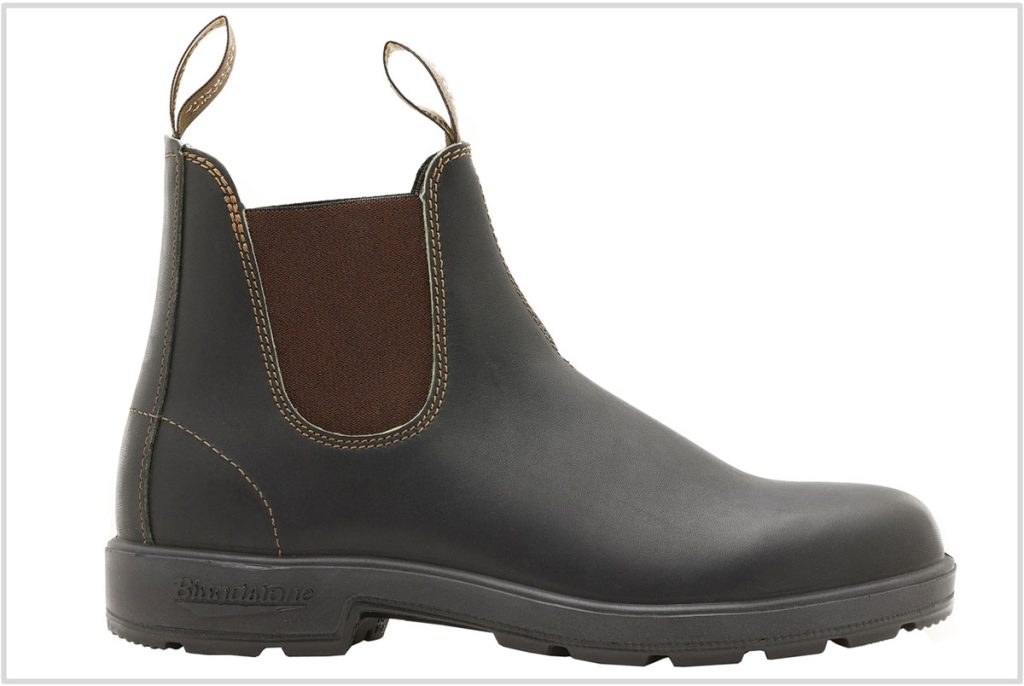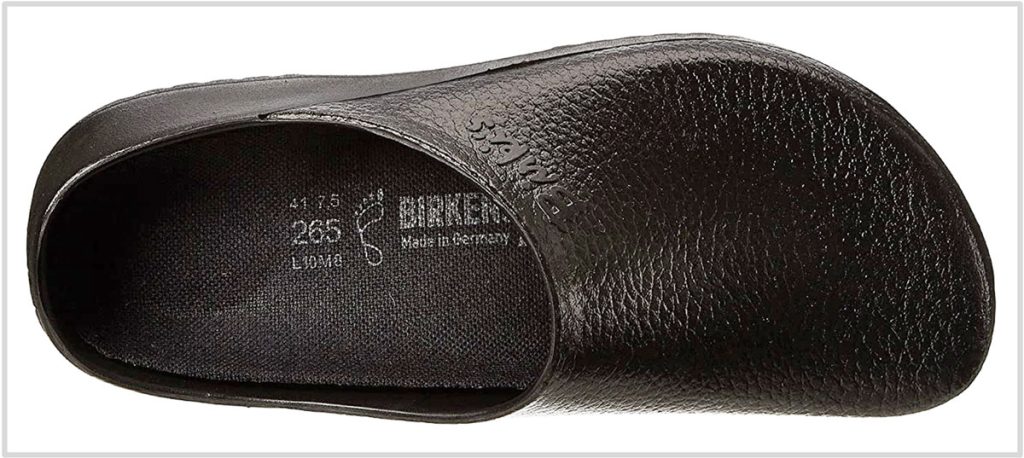This article has been updated with current models for March 2024. The Asics Nimbus 25 has been replaced with its updated version.
In this product guide:
- 1. Factors to consider
- 2. Our top pick for standing all day: Nike Invincible 3
- 3. Soft cushioning for standing all day: New Balance 1080 V13
- 4. Soft cushioning for standing all day: Asics Nimbus 26
- 5. Supportive cushioning for standing all day: adidas Ultraboost Light
- 6. Black dress (office) shoe for standing all day: Ecco ST1 Hybrid
- 7. White leather shoe for standing all day: Nike Monarch IV
- 8. Black leather shoe for standing all day: Brooks Addiction Walker 2
- 9. Black leather shoe for standing in restaurants: Dr Martens 8053 Oxford
- 10. Leather Chelsea boot for standing in restaurants: Blundstone BL500
- 11. Comfortable clog for standing in kitchens: Birkenstock Super Birki
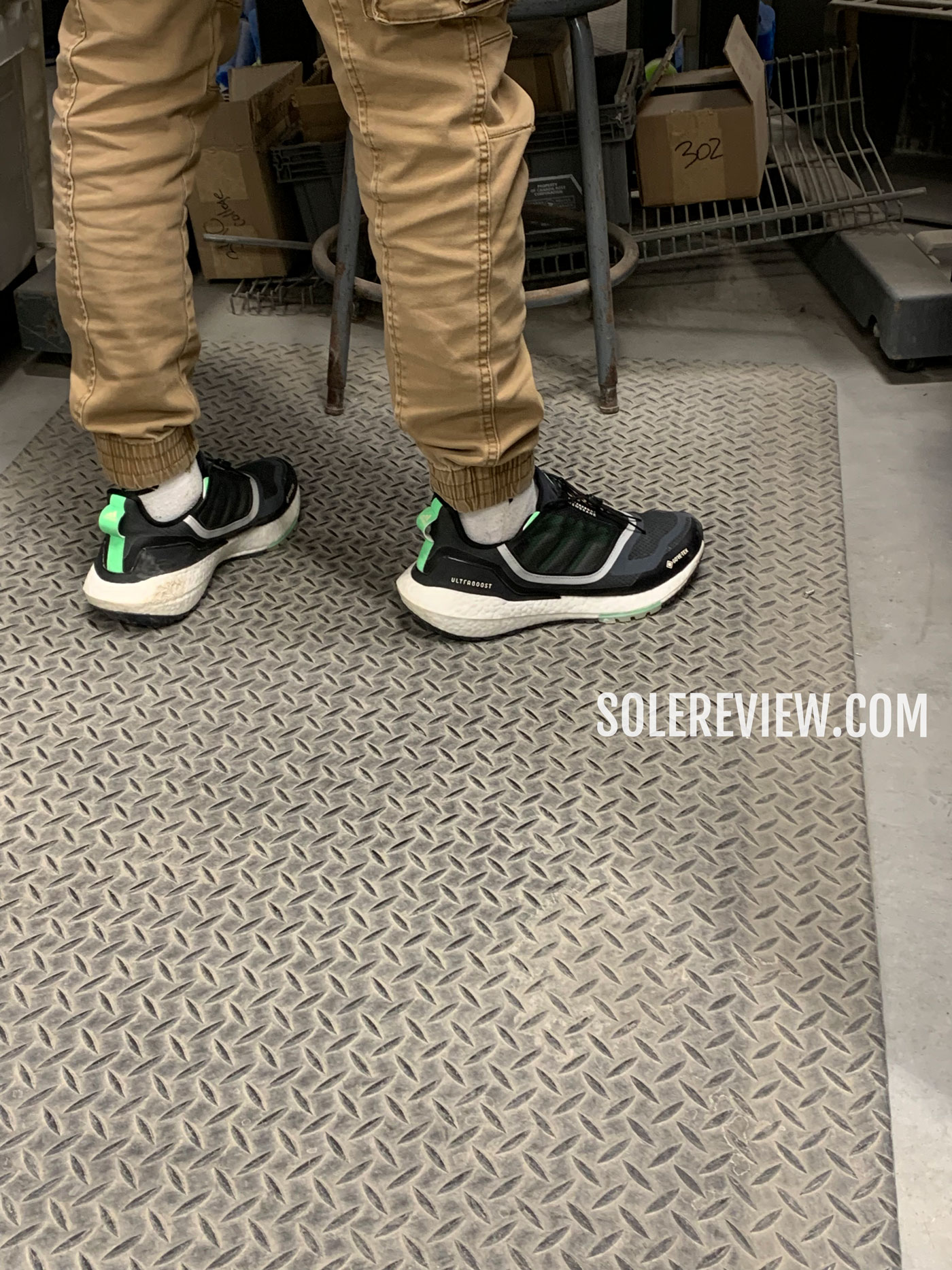
A postal worker wearing a pair of Ultraboosts. Many industrial settings have an anti-fatigue mat, but it’s not enough for long-term comfort. This is where a cushioned shoe helps.
Jobs that involve standing and walking put an enormous amount of stress on your feet. Just take a moment to think of it; the entire body weight rests on the feet over a period that could last anywhere between 6 – 14 hours.
People working in the retail and service industry know this, and so do those employed in hospitals, restaurants, and post offices.
(Related read: Our 4,000 word guide on the best shoes for letter carriers and postal workers)
ER personnel/doctors/nurses regularly work 12-hour shifts. If this is done in regular shoes, the experience can quickly turn unpleasant. The sole feels tired and strained; you can’t wait to get home and take your shoes off.
Even shorter shifts of 6 – 8 hours are tiresome. Solereview frequently receives footwear questions from readers employed in the healthcare and retail industry.
When choosing a pair of shoes for being on your feet all day, several design attributes need to be considered. If the following section appears similar to our walking shoe guide, that’s because both walking and standing have shared design needs.
1) The outsole design should preferably be wide and flat: An outsole with full ground contact is important to spread the pressure evenly. Over a prolonged period of standing, protruding outsole lugs may become a source of discomfort.
2) The midsole should be cushioned: You need a comfortable shoe if you’re going to be standing all day. Also, both the forefoot and heel should have ample cushioning because the bodyweight is constantly transferred across the heel and ball of the foot.
The Nike Invincible 3 takes the top spot on this list, and it’s a sign that new-age cushioning materials are replacing traditional EVA foam-based midsoles.
That being said, several EVA foam-based midsoles pass muster. The Asics Nimbus 25 delivers a superbly plush and padded ride through its thick Flytefoam (EVA blend) stack, and so does the New Balance 1080 V13.
So it isn’t just the midsole material, but the overall design that counts. The adidas Ultraboost Light is another example. Even though it has a high-volume midsole, it is firmer because of the outsole redesign and additional stability features.
3) A spacious upper to splay the toes: A narrow-fitting shoe can be torturous during long hours of standing, so a shoe with an accommodating interior helps.
4) A good grip for smooth artificial floors: Most jobs that involve standing are located indoors with artificial floors. So the outsole needs to have good traction. Shoes like the Brooks Addiction Walker 2 (featured here) have certified slip-resistant soles. Dr. Martens and Blundstone soles perform well on greasy floors too.
5) A higher heel-to-toe offset: The ‘offset’ or ‘heel drop’ indicates the difference between the heel and forefoot thickness. For a standing-friendly shoe, it’s preferable to have a higher heel drop (say 8-12 mm) to alleviate pressure on the Achilles tendon and calves.
Do sports shoes check all the boxes for standing all day? It depends.
In our opinion, most walking and running shoes are OK for standing – only if it is for 6-8 hours. People working in sporting goods stores fall under this category, where the shifts are relatively shorter. In some cases, sporting goods store employees get to choose a product to be a part of their uniform, so it makes sense to get a running shoe.
If the shifts exceed 6-8 hours, then adopting a different footwear strategy will be wise. We say this for a couple of reasons.
Most running shoe outsoles have rubber lugs and grooved separations that apply pressure from underneath. This isn’t an issue for a few hours but tends to manifest itself over a longer period.
The narrow waist of some running shoes is unsuitable for standing. The midsole is slim around the middle, and that translates into a conforming upper fit. Running shoes are built this way for a reason; the foot needs to be locked down during the runs. But the same snugness that benefits running will become uncomfortable during 12+ hours shifts.
That said, there are several running shoes on this list with a wide and supportive midsole. Noteworthy mentions would be the adidas Ultraboost Light, Asics Nimbus 25, and Nike Invincible 3.
Also, depending on the place of employment, other footwear requirements may need to be considered. For example:
1) Plain colors: If the workplace atmosphere is formal, then conspicuously colorful running shoes may be unacceptable.
Many athletic footwear are more colorful than confetti, thus making them unsuitable for formal settings. Hence, plain colors like all-white or all-black are desirable. The second part of this guide contains shoes that address such styling needs. Here, you’ll find shoes like the Ecco ST.1 Hybrid and other non-athletic footwear.
2) Maintenance-friendly design: Some jobs that require standing all day happen to be in the food-service industry, and the shoe is likely to come in contact with spilled liquids and such. So a mesh upper won’t cut it, but rather fully covered leather uppers that are easier to wipe clean.
3) Non-marking outsoles: Certain workplaces require footwear to be non-marking. This is the property of outsoles that leave no black skid/scuff marks on the floor.
If the shoes that are a part of your uniform possess non-marking outsoles, then you must find an appropriate replacement. Most running shoes do not have non-marking outsoles.
3) Oil-resistant outsoles: Most outsoles do not play well with greasy kitchen floors – a thin film of cooking oil and debris creates a hazardous surface. Here, one could either get an industrial clog like the Super Birki, or buy a pair of Dr. Martens with their Air-cushion outsoles. Even Blundstones and certain Mephisto models also pass muster.
We’ve updated this guide with a separate section on recommended shoes for chefs and restaurant workers. The footwear requirements for greasy floors and potentially hazardous spills are very different from your regular workplace.
As you can see, finding a shoe that is suitable for all-day standing isn’t as straightforward as it sounds.
Considering the number of variables involved, we’ve compiled three recommendation lists. The first group comprises athletic footwear (aka tennis shoes) that are comfortable enough for standing. The second section has everyday office shoes with workplace-safe colors and features.
Lastly, shoes for working in the hospitality industry (including kitchens) are grouped separately. Some service industry professionals prefer a clog for ease of use; they are easy to clean and also quick to remove after a hot spill. Here, clogs from Crocs, Dansko, and Birkenstocks perform well.
On the other hand, many chefs and restaurant workers prefer a proper boot or oxford. Closed shoes offer a higher level of support as well as the choice of using custom orthotics. Common choices are boots from Blundstone or Doc Martens.
The softest tennis shoes for standing all day
1) Nike Invincible 3
The Nike Invincible 3 retails at nearly $200, but it’s the last word in cushioning softness. We’ve summarized the shoe here, but our review has all the details.
Nike’s lightweight ZoomX foam is molded into a high-volume midsole for maximum comfort. The midsole is very wide through the heel and forefoot, so the softness doesn’t come at the cost of stability.
The cushioned and supportive platform makes the Invincible an excellent shoe for spending long hours on.
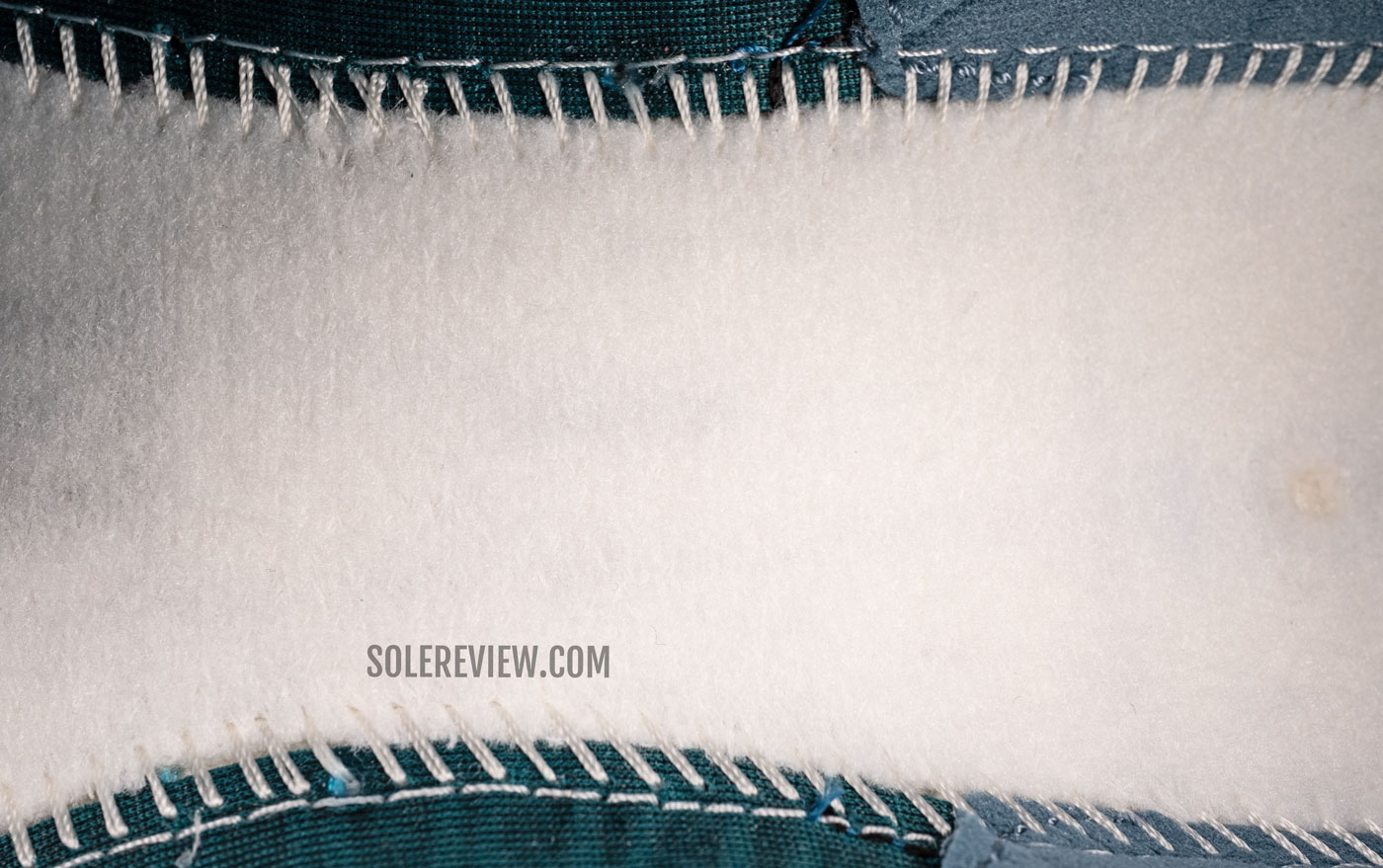
The Invincible 3 gets a fabric lasting covering the midsole – something that the V2 did not have. As a result, the cushioning is slightly more supportive.
For what it’s worth, the Invincible Run 3 gets a new lasting under the insole for a slight upside in overall stability. The softness is slightly lower than the Invincible 2, but that’s relatively speaking – the Invincible 3 continues to be a generously cushioned shoe.
The fully-sleeved upper is also comfortable; the padded heel and tongue keep the foot locked in.
The fit is accommodating without being sloppy, so that also contributes to the overall comfort levels. The upper of the redesigned model has a more relaxed fit due to the wider lacing set-up and mesh change.
The new two-piece outsole (the V1 and V2 had one) allows it to flex more easily with the midsole, and the surface has a dense colony of lugs for grip.
2) New Balance Fresh Foam 1080 V13
Since the V10, the 1080 has consistently offered a high-volume midsole with soft and deep cushioning. That doesn’t change for the 1080V13; the familiar ‘Fresh Foam’ (EVA blend) midsole makes it an excellent choice for standing for long hours. But here’s the thing – the 1080V13 has a noticeably higher level of soft plushness. It also feels more lively.
The midsole has a wide base, so there’s a uniform spread of cushioning available under the foot. The outsole uses strips of blown rubber under the forefoot, so it blends with the midsole instead of acting as a resistant layer. This prevents the formation of pressure hot spots under the feet.
There’s a major update on the upper. Unlike the elastic knit mesh on the 1080V12, the V13 no longer has a stretch upper. That said, the accommodating upper isn’t lacking in comfort. The toe-box mesh is soft, and so are the semi-stretchy laces. The padded tongue and heel add plushness where needed.
Just in case the standard width doesn’t fit, the 1080V13 runs in three additional widths, ranging from a narrow to an extra-wide.
3) Asics Nimbus 26
Like the Nimbus 25, the Nimbus 26 continues to be an extremely comfortable shoe for spending long hours in. While there have beeb a few updates for 2024, the overall fit and feel is very similar to the outgoing version.
There’s a lot of foam under the heel and forefoot. According to Asics, the rearfoot and forefoot stack heights are 42 mm and 34 mm respectively. The midsole has a wide footprint, so that makes the Nimbus 26 fairly supportive for its stack height.
The outsole rubber has been updated with the Asicsgrip compound, so the traction is an improvement over the Nimbus 25.
The snug upper is true-to-size and has the same heel pull loop we loved on the last year’s model. The Nimbus 26 is also offered in 2E (wide), 4E (extra wide, Lite-Show (reflective), and a TR (Trail) version.
4) adidas UltraBoost Light
The Ultraboost has always been an excellent shoe for casual wear use, and that doesn’t change with the Ultraboost Light.
For all practical purposes, the Ultraboost Light is the successor to the Ultraboost 22. Despite the name change, the new shoe has a wide and high-volume Boost midsole, so there’s no dearth of comfort for standing. The adidas Ultraboost is often the shoe of choice for retail workers, servers, and even delivery personnel – and it’s easy to see why.
The wide base makes it supportive; the stability is also helped by the plastic heel clip and redesigned Torsion shank. The cushioning isn’t a ‘sink-in’ kind like the Nike ZoomX Invincible, but comparatively firm and more supportive.
If you’re wide-footed, you might want to first try before buying. The forefoot/toe-box has a snug fit due to the stretchy Primeknit mesh upper.
This feedback isn’t specific to the UB-Light, as the Ultraboost has always had a tight fit.
However, we’ve never found the fit to be uncomfortable, and the elastic fit is likely to fit most foot profiles. The plastic cage ‘floats’ over the mesh upper, so it doesn’t press into the side like some of the earlier Ultraboosts did. The UB-Light modifies its floating cage design to make it more comfortable.
The Boost is made of expanded Polyurethane, so it is resistant to temperature changes (in freezing winters, for example). It’s also highly resistant to compression fatigue, thus increasing its lifespan.
Also see: The Saucony Triumph 21 – a generously cushioned shoe that uses the same material as adidas Boost.
Other comfortable dress/casual shoes for standing on your feet all day: (Non-running, ‘safe’ colors)
1) Ecco ST1 Hybrid
1) Ecco ST1 Hybrid
After reviewing the Ecco ST.1 Hybrid a few years ago, it’s a part of our regular shoe rotation – thanks to its cushioned and supportive PU midsole. That’s not the only thing the Ecco ST1 has going for it; its true-welted midsole is perfect for most formal settings. It doesn’t look like a dress sneaker at all.
The midsole cushioning is delivered by a dual-density midsole with a softer shock-absorbing core under the heel.
Above the PU midsole is a cushy, leather-lined insole with a generous amount of arch support. The wide and firm midsole makes the ST1 Hybrid very stable, even for heavier users.
Besides multiple colors, the Ecco ST1 Hybrid is sold in two variants. There’s a standard version with a rich leather upper, and another with a waterproof Gore-Tex lining, just in case your workplace involves contact with liquids.
Ideal use cases for the ST.1 Hybrid would be standing jobs like expo demonstrators, security, logistic supervision or any other job that requires long hours of standing.
2) Nike Monarch IV
The under-stated Monarch IV is one of Nike’s best-selling shoes and it’s easy to see why. A full-length Air bag offers ample cushioning within the firm and supportive midsole. The single-piece rubber outsole grips well and adds durability.
The upper is robustly built and is offered in an all-leather or mesh-leather combination. And let’s not forget the Monarch’s phenomenal value-for-money proposition; all these features are offered at a princely $80 retail price. Our in-depth review explains what makes the Monarch IV so good.
The workplace-safe color(s) is another thing that the Monarch has going for it.
3) Brooks Addiction Walker 2
While we preferred the original Addiction Walker due to its ‘Hydroflow’ cushioning system, the V2 is also a safe and dependable choice of footwear for standing duties.
Unlike the (more) colorful shoes on this guide, the Brooks Addiction Walker 2 is available in muted and solid colors that make it workplace-safe. You have the choice of either a black or white – that’s as conservative as it gets.
The smooth leather upper makes it easy to wipe down the shoe while keeping the foot warm during colder weather or within air-conditioned confines.
The firm ride makes the shoe very stable; after all, this is a 14.5-ounce (411-gram) shoe. Making the shoe heavy is also the thick outsole that completely covers the sole. The outsole is certified slip-resistant.
Comfortable standing work shoes for kitchen and restaurant workers
1) Dr. Martens 8053 Oxford
1) Dr. Martens 8053 Oxford
With Dr. Martens, it doesn’t matter if it’s a 1460 or 8053. For that matter, a boot or an Oxford.
As long as the model has the signature ‘Air Cushion’ sole, you’re covered. By that, we refer to the translucent outsole’s resistance to oil, acid, and fat – as well as its adequate levels of slip resistance.
The insole and the sole with its hollow chamber make most Docs sufficiently comfortable for all-day standing and walking.
Buying an eight-eyelet lace-up 1460 boot will provide better protection as well as ankle support, but a lot of service industry workers also prefer the low-cut Oxford design. Certain variants have oil pull-up leather upper that does a good job of repelling water.
The Doc Martens and Blundstones are usually two of the most popular brands bought by food industry professionals for their use-case versatility.
Also see: The Keen PTC Oxford – a certified non-slip shoe with a black leather upper and EVA foam midsole.
2) Blundstones BL 500 Original 500 Chelsea Boot
A Chelsea boot silhouette has several advantages when used in the service industry. The no-lace exterior makes it harder for spilled liquids to get inside the shoe.
And it helps if it’s a pair of Blundstone BL500; the oiled leather does a good job of repelling fluids. There’s no lacing, so the elastic panels make the boot easy to wear and take off.
Like the Doc Martens Air-Cushion sole, the Blundstone sole is resistant to oil, acid, and organic fat. While the BL500 is not certified as occupational footwear, it can be used as a part of a workplace uniform or casual streetwear.
The PU midsole and removable comfort footbed make the BL500 comfortable enough for everyday wear.
3) Birkenstock Super Birki Clog
A commercial-grade Polyurethane foam Clog is very convenient in the service industry for several reasons.
The one-piece construction makes it very easy to clean and disinfect, whereas the specially formulated sole is slip-resistant and great at repelling grease and oil. One can toss the S-Birki into a dishwasher after removing the insole; that’s not possible with a pair of Blundstones or Dr Martens.
At the same time, the all-foam construction provides all-day comfort with a supportive ride.
The Super-Birki has a removable cork-latex footbed for an extra layer of comfort. The S-Birki has a super-wide midsole and upper for stability and sufficient air circulation in a hot environment.
Also, a lot of food industry professionals want the option of removing their footwear quickly in case of an unfortunate oil spill. That’s why most chefs wear open footwear like a clog.
The S-Birki is a certified occupational footwear product.
Do you own any of these shoes? Improve this review by sharing your insights – submit a review here.

